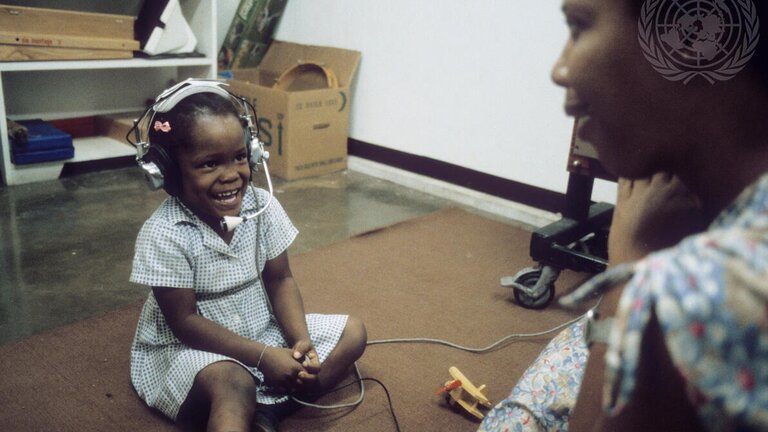Many persons with varied disabilities in Kenya use technology to enhance learning, work, and independence by use of assistive technology. It helps persons with disabilities reach their full potential.

Through increased independence and productivity, persons with disabilities can be physically, socially, academically, recreationally, and vocationally integrated into the community. Persons who cannot speak may use a communication device to express their needs. A person with vision impairment may use a computer screen reading software programme to continue learning. A scholar with a physical disability may use the computer software, instead of a paper and pencil, to study or carry out research.
-
Aids for Daily Living (ADL) for use in activities such as eating, bathing, cooking, dressing, using toilet facilities and home maintenance.
-
Bed Modification Devices (BMDs) that make functioning in the bedroom easier. Examples include manual beds, side rails and transfer equipment.
-
Communication Aids, devices, and methods that enhance personal expressive communication. Examples include manual and electric picture boards.
-
Computer Access Software and hardware that allow persons with disabilities to use computers.
-
Education Equipment that enables persons with disabilities to carry out school or work-related tasks.
-
Electronic Aids for Daily Living (EADL) Primarily electronic switches or systems that enable a person to control appliances, electronic aids, lights, telephones, security systems, etc. in room, home, or other surroundings.
-
Hearing devices that enhance hearing. Examples include hearing aids, visual and tactile alerting systems and telecommunications devices for persons who are deaf or hard of hearing.
-
Home/Building Modifications Structural adaptations to buildings that remove or reduce physical barriers. Examples include ramps and lifts, available in the K.U. Post Modern Library, as well as minor physical adaptations such as replacing doorknobs with levers.
-
Mobility/Ambulation Devices that enhance movement. Examples include transfer aids, patient lifts, all types of wheelchairs and wheeled vehicles, canes, crutches, and walkers.
-
Prosthetics and Orthotics Artificial limbs and devices used to replace, substitute or augment missing or malfunctioning body parts and thereby facilitate function. Examples include braces, splints, and supports.
-
Recreation/Leisure Adaptations that enable people to participate in sports or other fun activities in their free time. Examples include hand cycles or modified snowboards.
-
Sitting and positioning modifications to wheelchairs or other seating systems that provide greater body stability, improved posture, or reduction of pressure. Examples include wheelchair cushions, supports, modular seating and seat lifts.
-
Transportation/Driving Items that enable personal transportation. Examples include cars and vans (K.U Disability Services Shuttle), fitted with boarding facilitation systems, child restraint systems and modifications to ensure vehicle access.
-
Vision Devices that enhance sight. Examples include eyeglasses, magnification devices and other equipment (e.g., talking calculators and large button phones) for people with visual impairments.
Whether it is a common tool, a customized device, or a product system, technology can promote, increase, maintain or improve the functional capabilities of persons with disabilities. Technology helps people get and keep jobs, and it allows people to enjoy greater participation in the community. Persons with disabilities who use technology discover how much it enhances the overall quality of their life; they see new possibilities and experience more of what life has to offer.
To get a variety list of assistive applications you can use, click HERE.
